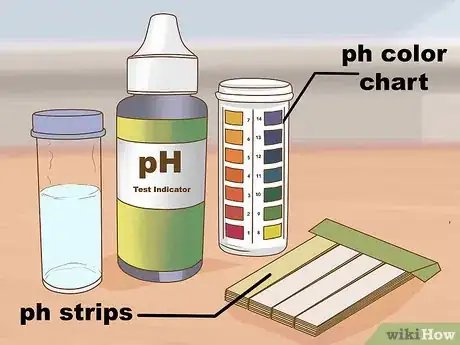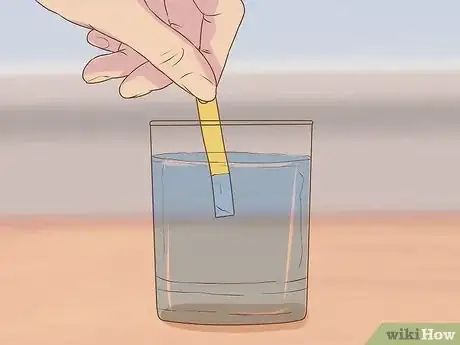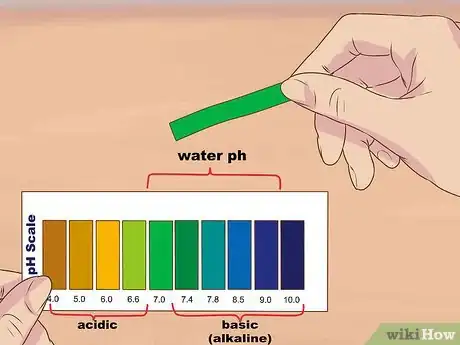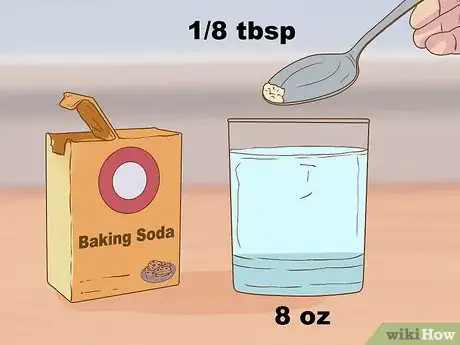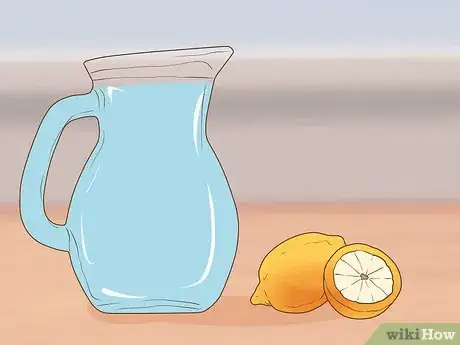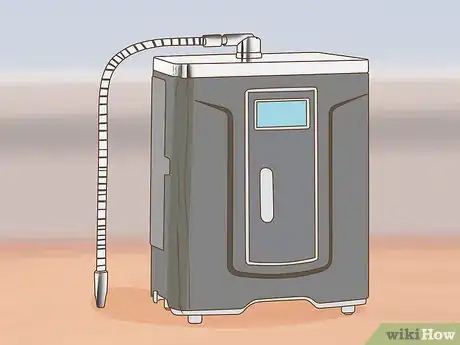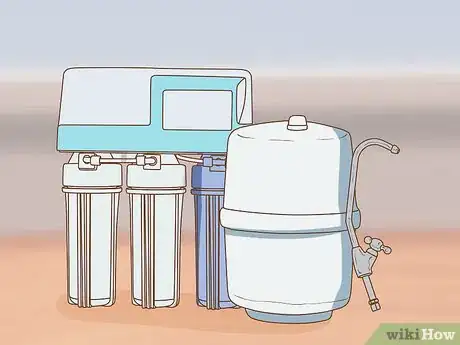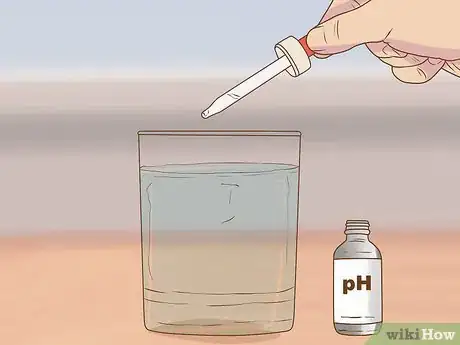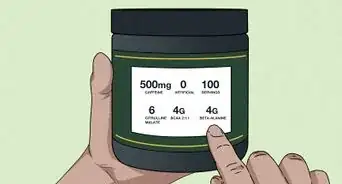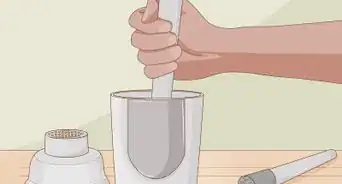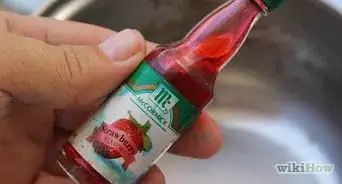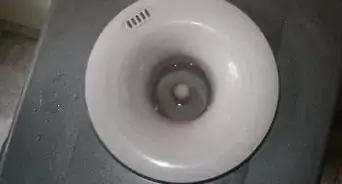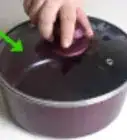wikiHow is a “wiki,” similar to Wikipedia, which means that many of our articles are co-written by multiple authors. To create this article, 26 people, some anonymous, worked to edit and improve it over time.
wikiHow marks an article as reader-approved once it receives enough positive feedback. This article received 67 testimonials and 90% of readers who voted found it helpful, earning it our reader-approved status.
This article has been viewed 2,207,459 times.
Learn more...
Alkalized water is believed to boost your metabolism, reduce acid in your bloodstream, and help your body absorb nutrients more quickly, among other benefits. This wikiHow will teach you various ways in which to alkalize water at home.
Steps
Determining the pH Before You Alkalize
-
1Determine the pH level[1] of your water. Before and after you alkalize your water, you should check to see what you water’s pH level is. Doing this will tell you how much of an adjustment will need to be made to your water. Water is naturally a 7 on the scale,[2] but impurities in the water tend to tip the scale toward the left (more acidic). The ideal pH level for pure drinking water is 6.5 to 8.5.[3]
-
2Purchase a pH kit. You can buy a pH kit at most health stores. The kit should come with pH strips and a pH color chart.[4]Advertisement
-
3Dip a strip into your water before you alkalize. Let the strip sit for a moment, and then compare the strip’s color with the colors on the chart. Note what your water’s pH level is and then alkalize your water by performing one of the methods listed below. After you alkalize your water, your water should be roughly 8 or 9 on the pH scale.
-
4Understand the pH of your water. When water is above a 7 on the pH scale, the water is basic, while water below a 7 is acidic. You want your water to be somewhere between 7 and 9.
Alkalizing with Water Additives
-
1Use baking soda. Add 1/8 tbsp (600 mg) baking soda to an 8 oz. (0.237 liters) glass of water. Baking soda has a high alkaline content. When the baking soda mixes with the water, it increases the alkaline properties of the water. Shake (if you are using a water bottle) or stir (if using a glass) the mixture vigorously to make sure the baking soda mixes in thoroughly with the water.
- If you are on a low sodium diet, do not add baking soda to your water. Baking soda is high in sodium.
-
2Use lemons. Lemons are anionic, so when you drink lemon water, your body reacts with the anionic properties of the lemon making the water alkaline as your body digests it.[5]
- Fill one pitcher (64 oz.) with clean water. Filtered water is the best way to go, but if you don’t have a filter, tap water is okay to use.
- Cut up one lemon into eighths. Add the lemons to the water but do not squeeze them--simply place them in the water.
- Cover the water and let it sit overnight for 8 to 12 hours at room temperature.
- You can add one tablespoon of pink Himalayan sea salt to your lemon water if desired. Adding the salt mineralizes your alkaline water.
-
3Add pH drops. pH drops contain potent alkaline minerals and are highly concentrated. You can purchase pH drops at health food stores or online. Follow the directions on your specific pH bottle to determine how many drops you should put into your water.
- Keep in mind that while pH drops increase the alkalinity of your water, they do not filter out any of the things like chlorine or fluoride that can be found in your tap water.
Using Different Filtrations Systems
-
1Buy a water ionizer. Water ionizers attach to your faucet and are very user friendly. The water becomes electrically enhanced (ionized) because the ionizer runs it over positive and negative electrodes. Doing this separates the water into alkalized water and acidic water.[6] The alkalized water makes up about 70% of the produced water and can be used for drinking.
- Don’t just discard the acidic water. Acidic water can kill many types of bacteria. You can use it for washing your body, killing some of the bacteria living on your skin.
-
2Purchase an ionizing water filter. These filters are easily transportable and cheaper than buying an electric ionizer. They work in a similar fashion to a normal filter. Pour water into the filter and let it sit for three to five minutes. While you are waiting, the water is being sent through a series of filters. Once it passes through the filters, it sits in a pool of alkalizing minerals.
- These filters can often be found with the kitchen appliances in home stores.
-
3Buy a reverse osmosis water filter. This type of filter is known as a hyperfilter, and it uses an especially fine membrane for filtration. The delicacy of the filter allows it to capture more elements than regular water filters, which ultimately alkalizes the water more completely.
- These filters can be purchased at local home improvement or hardware stores and are located alongside traditional water filters.
-
4Use a normal water distiller and add pH drops. Water distillers boil the water put into them, destroying the bacteria and other impurities that may be found in your tap water. Water distillers can make your water slightly more alkaline, but to really alkalize your water, add pH drops to your newly purified water.
- Water distillers range in price and size. They can be found alongside other kitchen appliances.
Community Q&A
-
QuestionWhat are the side effects of alkaline water?
 wikiHow Staff EditorThis answer was written by one of our trained team of researchers who validated it for accuracy and comprehensiveness.
wikiHow Staff EditorThis answer was written by one of our trained team of researchers who validated it for accuracy and comprehensiveness.
Staff Answer wikiHow Staff EditorStaff AnswerIf you consume too much baking soda as part of drinking alkaline water, this can cause you to feel sick (nausea, maybe even vomiting). Another possible side effect of alkaline water if consumed in high amounts is that it that creates too much alkalinity and you may experience side effects like tingling, confusion, muscle twitches and hand tremors. Stick to drinking this type of water in moderation as a part of a healthy diet. If you have any concerns, speak with your doctor.
wikiHow Staff EditorStaff AnswerIf you consume too much baking soda as part of drinking alkaline water, this can cause you to feel sick (nausea, maybe even vomiting). Another possible side effect of alkaline water if consumed in high amounts is that it that creates too much alkalinity and you may experience side effects like tingling, confusion, muscle twitches and hand tremors. Stick to drinking this type of water in moderation as a part of a healthy diet. If you have any concerns, speak with your doctor. -
QuestionDo it yourself alkaline water?
 wikiHow Staff EditorThis answer was written by one of our trained team of researchers who validated it for accuracy and comprehensiveness.
wikiHow Staff EditorThis answer was written by one of our trained team of researchers who validated it for accuracy and comprehensiveness.
Staff Answer wikiHow Staff EditorStaff AnswerYes, you can make alkaline water yourself. An easy method is to stir ⅛ tablespoon of baking soda into 1 cup (240ml) of water. Stir to combine, chill, then drink. Or, you can use pH drops and add these according to the package instructions. The article above provides other methods for making your own alkaline water, including using additives and filtration systems.
wikiHow Staff EditorStaff AnswerYes, you can make alkaline water yourself. An easy method is to stir ⅛ tablespoon of baking soda into 1 cup (240ml) of water. Stir to combine, chill, then drink. Or, you can use pH drops and add these according to the package instructions. The article above provides other methods for making your own alkaline water, including using additives and filtration systems. -
QuestionCan baking soda make alkaline water?
 wikiHow Staff EditorThis answer was written by one of our trained team of researchers who validated it for accuracy and comprehensiveness.
wikiHow Staff EditorThis answer was written by one of our trained team of researchers who validated it for accuracy and comprehensiveness.
Staff Answer wikiHow Staff EditorStaff AnswerYes, baking soda can be used to make alkaline water. To make one version using baking soda: Add ⅛ tablespoon baking soda to 8 fl oz glass of water. Shake if it’s in a water bottle or simply stir with a spoon if you’re making the alkaline water in a glass. Serve immediately.
wikiHow Staff EditorStaff AnswerYes, baking soda can be used to make alkaline water. To make one version using baking soda: Add ⅛ tablespoon baking soda to 8 fl oz glass of water. Shake if it’s in a water bottle or simply stir with a spoon if you’re making the alkaline water in a glass. Serve immediately.
Warnings
- Do not add more than the suggested amount of baking soda to your water. It can make you sick.⧼thumbs_response⧽
- There isn't much evidence showing that alkaline water has notable health benefits. If you decide to try alkaline water, do so with caution and monitor your health for negative side effects.⧼thumbs_response⧽
References
- ↑ https://www.chemicool.com/definition/ph.html
- ↑ https://www.usgs.gov/special-topic/water-science-school/science/ph-and-water
- ↑ https://www.epa.gov/sdwa/drinking-water-regulations-and-contaminants
- ↑ https://sciencing.com/use-ph-strips-test-water-7869805.html
- ↑ http://www.youngandraw.com/how-to-make-your-own-alkaline-water-at-home-2/
- ↑ https://www.medicalnewstoday.com/articles/313681.php
About This Article
The easiest way to make alkaline water is to thoroughly stir 1/8 tbsp of baking soda into 1 cup (240 mL) of water. You can also buy pH drops, and use them according to the instructions. Read on for more ideas on alkalizing water with additives and filtration systems.

